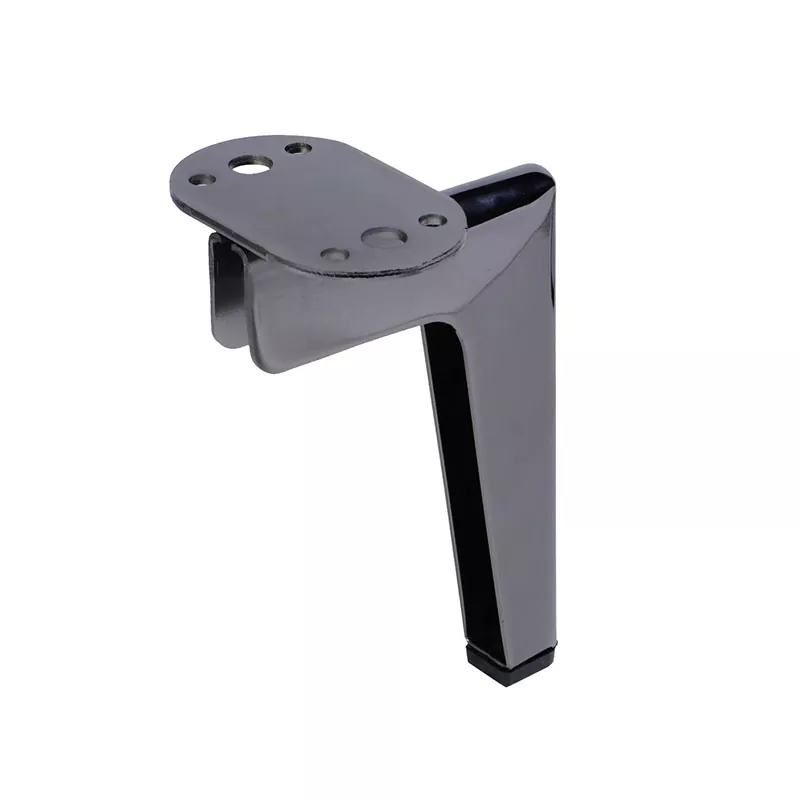Understanding Furniture Stamping Parts: The Backbone of Quality Furniture Manufacturing
2024-11-01
In the world of furniture manufacturing, precision and durability are essential to producing high-quality products. One of the key components that contribute to these qualities is furniture stamping parts. These small but crucial pieces are often unseen, yet they play a significant role in the structural integrity and functionality of various furniture types, from office desks to home storage solutions.
This blog will explore what furniture stamping parts are, their manufacturing process, applications, and why they are essential for the furniture industry.
What Are Furniture Stamping Parts?
Furniture stamping parts are metal components created through a process called stamping, which involves shaping metal sheets into specific forms. These parts are essential for joining, supporting, and reinforcing furniture structures. Common furniture stamping parts include brackets, hinges, connectors, legs, handles, and drawer slides, which ensure that furniture is sturdy, functional, and aesthetically pleasing.
The Stamping Process: How Are Furniture Stamping Parts Made?
The stamping process is highly efficient and precise, involving several steps:
1. Design and Tooling: The first step involves designing the parts using computer-aided design (CAD) software. Once finalized, dies and molds are created to form the parts during the stamping process.
2. Sheet Metal Selection: High-quality metal sheets, often made of steel, aluminum, or brass, are selected based on the specific application requirements. The metal’s thickness and properties are critical to ensure strength and durability.
3. Blanking: In the blanking process, the metal sheet is cut into shapes or “blanks” that fit the die. This prepares the metal for the stamping process.
4. Stamping: The blanks are placed into the stamping press, where force is applied to shape the metal. This may include operations like bending, punching, embossing, and drawing to achieve the desired form and specifications.
5. Surface Finishing: Once stamped, parts undergo surface treatments such as polishing, coating, or painting to protect them from corrosion, enhance appearance, and increase longevity.
6. Quality Control: Every part goes through rigorous quality checks to ensure it meets dimensional accuracy, strength, and finish standards.
Types of Furniture Stamping Parts
Furniture stamping parts come in a variety of shapes and functions, depending on the furniture design. Here are a few common types:
1. Brackets and Supports: Used in framing furniture, such as tables, chairs, and shelving units, to reinforce joints and increase stability.
2. Connectors: Designed to link different furniture parts, connectors provide a secure, often detachable joint between pieces.
3. Hinges: Critical for cabinets, wardrobes, and other furniture with doors, hinges allow for smooth opening and closing actions.
4. Drawer Slides: These parts make drawers functional, ensuring they glide open and close effortlessly. High-quality stamped slides can withstand heavy loads and frequent use.
5. Legs and Bases: From minimalist metal legs for modern furniture to more intricate bases, stamped parts can serve as support systems for many furniture types.
6. Handles and Knobs: Often stamped and finished for aesthetics, these parts are functional yet add to the overall look of furniture.
Advantages of Using Stamped Parts in Furniture Manufacturing
Furniture stamping parts offer several benefits that make them indispensable in the industry:
1. Cost-Effectiveness: Stamping allows for mass production, which reduces material and labor costs without compromising on quality.
2. Precision and Consistency: The use of advanced dies and machinery ensures high precision, resulting in uniform parts that fit seamlessly into furniture designs.
3. Durability: Metal stamping parts are highly durable, providing strength to the furniture’s framework, even under heavy loads or frequent use.
4. Customization: Stamping allows manufacturers to create custom parts tailored to specific designs, accommodating unique shapes, patterns, and finishes.
5. Aesthetic Appeal: Stamping allows for detailed designs, enhancing the visual appeal of furniture, whether in decorative handles or sleek brackets.
Applications of Furniture Stamping Parts
Furniture stamping parts find use in a wide range of furniture applications:
- Home Furniture: Beds, tables, cabinets, and sofas rely on stamped parts for structural integrity, stability, and functionality.
- Office Furniture: Desks, chairs, shelving units, and file cabinets often use stamped metal connectors, hinges, and slides to withstand heavy daily use.
- Storage Solutions: In closets and modular storage units, stamped brackets, hinges, and drawer slides help create versatile and durable storage options.
- Outdoor Furniture: Stamped parts made from rust-resistant metals or coated to withstand the elements are commonly used in patio sets, benches, and garden chairs.
The Future of Furniture Stamping Parts: Embracing Sustainability and Innovation
With growing environmental awareness, the furniture industry is increasingly focused on sustainability. Modern stamping facilities now prioritize energy-efficient manufacturing, recycling of metal scraps, and the use of eco-friendly materials. Advancements in stamping technology, including robotic automation and AI-driven quality control, are enhancing precision and efficiency, allowing manufacturers to produce even more complex and high-quality furniture parts.
Conclusion
Furniture stamping parts may seem like small components, but they are integral to creating durable, functional, and stylish furniture. From brackets and hinges to handles and drawer slides, these parts ensure that our furniture remains sturdy and operates smoothly. With ongoing innovations in stamping technology, the future of furniture manufacturing looks promising, providing us with even better, more sustainable, and cost-effective options.
So next time you open a drawer or sit at a desk, take a moment to appreciate the precision and engineering behind these humble, yet essential parts that make furniture work effortlessly.



